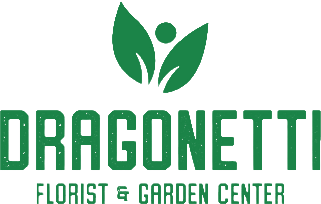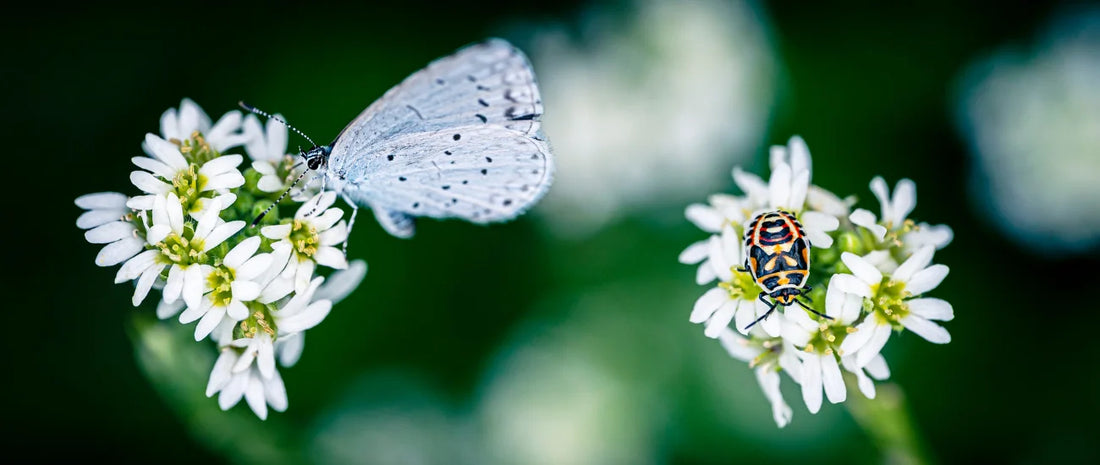Bees tend to dominate the conversation around pollination. They’re visible, vocal, and undeniably effective. But they’re not the only ones doing the work. The process of pollination - transferring pollen from one flower to another - is much more complex and diverse than most people realize. There are different flower pollinators playing major roles across ecosystems, and many of them go unnoticed.
Some pollinators operate quietly. Others work at night. Some focus on flowers that bees don’t even visit. But together, they create the biodiversity that allows plants, and by extension entire food webs, to survive.

Butterflies and Moths
Butterflies pollinate in a slower, more delicate way than bees. Their bodies aren’t as fuzzy, which means they don’t collect as much pollen per visit. But what they lack in quantity, they make up for in reach. Many butterfly species travel long distances, visiting a wide range of plants in a single day. That mobility increases their impact, especially in areas where bees may be less active.
They also target a different type of flower. Butterflies are drawn to flat, open blooms, plants like milkweed, coneflowers, and lantana. Their long proboscis allows them to access nectar tucked deep within a flower, making them valuable to species that depend on deeper pollination points.
Moths, their nocturnal counterparts, perform similar tasks at night. In certain habitats, especially desert and high-altitude environments, moths are among the primary different flower pollinators keeping native plants alive.

Hummingbirds and Other Birds
In the Americas, hummingbirds are critical to many flowering plants. Their rapid wingbeats and hovering abilities allow them to feed mid-air, often visiting dozens of flowers in minutes. Unlike bees, they’re attracted to bright red or orange tubular flowers, a shape specifically evolved to match their long, narrow beaks.
Hummingbirds don’t just collect nectar. As they reach into a flower, their heads and throats come into contact with pollen, which is then carried to the next bloom. For many native species in Central and South America, hummingbirds are the only reliable pollinators.
Other birds also contribute. In some tropical regions, species like sunbirds and honeyeaters take on the same role. These birds fill pollination gaps in ecosystems where insect activity is limited by heat or altitude.
Bats: The Unexpected Allies
While bats might not be the first thing that comes to mind when discussing flowers, they’re vital pollinators for many plants, especially in tropical and desert regions. They tend to target flowers that open at night and produce strong, fruity scents. These blooms are often pale or white, adapted to attract nocturnal visitors.
Bats have strong senses of smell and excellent memory, which means they’re efficient and consistent pollinators. In the Southwest United States and Mexico, for example, species like the lesser long-nosed bat pollinate agave and saguaro cactus. These aren’t fringe plants, they’re foundational to local landscapes and economies.
Without bats, entire ecosystems would lose their balance. Many plants that rely on them have no alternative pollinators.

Beetles, Flies, and Other Insects
Bees, butterflies, and birds might get the spotlight, but there’s a wide range of insects doing the quiet work of pollination. Beetles are among the oldest pollinators on Earth. They tend to visit open-faced flowers with strong fragrances, particularly those with thick petals they can crawl over without damaging.
Flies also contribute - especially hoverflies and bee flies. Some flowers even mimic the smell of decay to attract certain fly species, which carry pollen from one foul-smelling bloom to another.
These different flower pollinators often operate at the edges. They might not be the most efficient, but they’re reliable. And they offer something that bees can’t: pollination under a wider variety of conditions and at different times of year.
Why Diversity Matters
Pollination isn’t a one-size-fits-all process. Different plants have evolved with different flower pollinators. In some cases, the relationship is so specific that if one species disappears, the other can’t reproduce. That’s why it’s dangerous to focus only on bees when we talk about conservation or flower health.
At Dragonetti Florist, we see the results of this diversity every day. The flowers we source, grow, and design with depend on a wide network of pollinators. Some blooms arrive thanks to butterflies, others to birds or bats. That variety is part of what makes floral work interesting and what keeps our environment resilient.
Looking for ways to help pollinate your own garden? Visit our local florists in your area and we’ll walk you through the best flowers to plant, the right soil to use, and even how bird feeders and other small changes can make a big difference.

Supporting a Full Ecosystem
One of the best ways to support pollination is to plant with variety in mind. Include flowers that bloom at different times of year. Use native plants when possible. Think about scent, shape, and color, not just what looks good in a vase, but what might help a passing butterfly or hummingbird.
When we talk about different flower pollinators, we’re also talking about the future of floral life. Whether it’s a bouquet, a garden bed, or a wild hillside, pollinators make it happen. The more we understand about who’s doing the work, the better we can protect the process.

